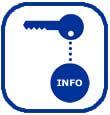 Standards-Based Research References
Standards-Based Research References
Pre-Assessment (Diagnostic-Prescriptive Assessment)
Monroe (1932) pioneered the concept of using assessment to direct instruction, sometimes called diagnostic-prescriptive teaching. This approach focuses on the diagnosis and detection of the strengths and weaknesses of each student (White, 1998). This knowledge then guides teachers in modifying their instruction to address students’ individual needs (Fuchs et al. 2003).
Formative Assessment
Formative assessment is a self-reflective and two-way process between teacher and student that can help enhance and promote better learning. Through formative assessment, the student becomes more aware of his or her learning and can better internalize what they've learned. For the teacher, formative assessment allows them to identify ways to better reach students and help them learn according to their unique abilities and learning styles (Formative assessment, 2008). Research shows that “ongoing formative assessment of students, which is informal, often daily assessment of how students are progressing under current instructional practices” is essential for successfully improving middle and high school literacy achievement (Biancarosa & Snow, 2004, p. 4). Tomlinson (2005) asserts that formative assessment should not be graded, as it would discourage mental risk-taking, take up too much of the teacher’s time, and inhibit motivation for many students. In addition, learning does not come merely from having experiences, but from reflecting upon those experiences (Haskell, 2001; Hunkins, 1995; Rodgers, 2002). Supportive yet challenging questions can encourage reflection. “Assessments should require students’ demonstrations of understanding, not just recall of information or formulaic modeling” (McTighe & Brown, 2005, p. 236). Moreover, formative assessment produces significant student learning gains, and it helps to narrow the achievement gap between high achievers and struggling learners (Black & Wiliam, 1998).
There are five effective ways teachers can improve their formative assessment efforts as tools for improving student learning:
-
Feedback to any pupil should be about the particular qualities of his or her work, with advice on what he or she can do to improve, and should avoid comparisons with other pupils.
-
For formative assessment to be productive, pupils should be trained in self-assessment so that they can understand the main purposes of their learning and thereby grasp what they need to achieve.
-
Opportunities for pupils to express their understanding should be designed into any piece of teaching, for this will initiate the interaction whereby formative assessment aids learning.
-
The dialogue between pupils and a teacher should be thoughtful, reflective, focused to evoke and explore understanding, and conducted so that all pupils have an opportunity to think and to express their ideas.
-
Tests and homework exercises can be an invaluable guide to learning, but the exercises must be clear and relevant to learning aims. The feedback on them should give each pupil guidance on how to improve, and each must be given the opportunity to help to work at the improvement. (Black et al., 2004)
Portfolios are a valuable formative assessment tool to aid in implementing differentiated instruction (Bender, 2002; Fernsten & Fernsten, 2005). Portfolios may be used for both formative and summative assessment. Any student self-assessment program must provide suggestions for growth to successfully promote learning (Bass & Glaser, 2004).Research shows that self-evaluation when used before, during, and after instruction can improve student learning (Brimijoin, Marquissee, & Tomlinson, 2003). McTighe and Brown suggest, “one important aspect of becoming a confident and capable learner lies in the capacity to set goals, monitor one’s own progress, self-assess, and adjust as needed” (2005, p. 241).
Summative Assessment
Ongoing assessment of students’ progress is essential to successful engagement of adolescents (National Research Council, 2004). Annual standardized tests provide little useful information for teachers to influence their instructional decisions. The report strongly endorsed the use of daily or weekly classroom-based assessment. Tomlinson and Eidson (2003) suggest that grades should be based in part on students’ growth.
Biancarosa and Snow reiterate, “The ongoing summative assessment is required for accountability purposes in order to evaluate the effectiveness of programs overall, for subgroups of students, and for individual students” (2004, p. 29). However, Levine (2003) charges that end-of-grade testing unfairly discriminates against students who have difficulty performing on multiple-choice exams or functioning under time pressures.
Assuring fair assessments for students with disabilities may include modifications to the test or adaptations in the administration of the test or in the kind of responses students must provide (Koretz & Barton, 2004). The authors assert that the aim of such adaptations it to provide greater validity in assessing what students really know. Demmert (2005) cautions educators to consider the cultural background of students in designing and implementing assessment procedures. Such factors as the language spoken in the home and values of their cultural community may greatly influence evaluation performance.
A Standards-Based Context for Differentiating Instruction
The American Psychological Association adopted a set of learner-centered psychological principles, including one that states, “Setting appropriately high and challenging standards and assessing the learner and learning process—including diagnostic, process, and outcome assessment—are integral parts of the learning process” (1997, p. 1).
Tomlinson asserts, “There is no contradiction between effective standards-based instruction and differentiation. Curriculum tells us what to teach: Differentiation tells us how” (2000, p. 8). Within a standards-based curriculum differentiation only suggests the optimal ways to help all students succeed in that curriculum.
Hoover and Patton note that standards-based education consists of three interconnected areas:
- content standards
- performance standards
- opportunity-to-learn standards
McTighe and Brown conclude “a genuine balance between educational standards and individualized approaches to teaching and learning is both possible and necessary” (2005, p. 235). They assert that while all students should be held to the same standards, the depth of content coverage, the types of assessment employed, and the teaching strategies used must vary to accommodate the needs of diverse learners.
In an exhaustive review of research on motivating unengaged students, the National Research Council (2004) noted that while high expectations are essential to success, those standards must be “genuinely achievable.”
